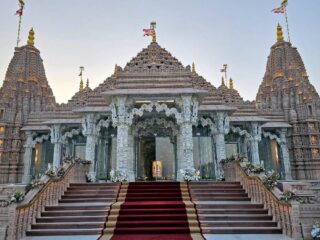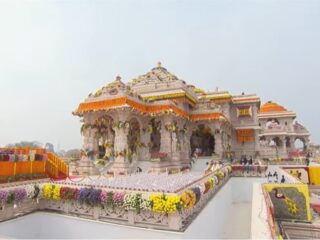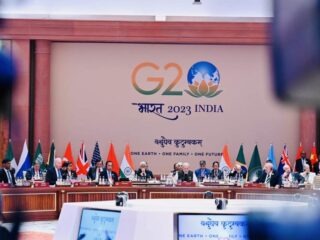Irfan Engineer
(Secular Perspective Feb.1-15, 2015)
Haryana:
Haryana recorded three communal incidents which were reported in media one in Mewat and two in Gurgaon. Haryana is normally known for communal harmony although it is land of khap panchayats and caste conflicts. Haryana recently went through state elections and the BJP would gain from polarization along communal lines. The INLD’s Muslim candidate who polled more than 2 lakh votes from three Muslim dominated Assembly segments of Gurgaon parliamentary constituency too was instigating Muslims (Dogra, 2014).
On 10th April, there was communal incident in Gurgaon parliamentary constituency of Mewat region when Muslim supporters of INLD and the BJP workers clashed resulting in a death of a Muslim youth – Wajid – from gunshot injuries. The conflict began outside a polling booth at Nakanpur of Punhana Tehsil. The BJP workers later enlarged the conflict by targeting Meo Muslims. The IGP however said that death of Wajid was not related to the communal incident between Meos and the BJP workers (Express News Service, 2014).
On 7th June a routine road accident by an overloaded dumper driven by two Muslim boys in which a Hindu boy Daanvir Kumar was killed led to outbreak of communal violence in Tauru town, 15 kms from Gurgaon in Mewat. A Muslim fired upon Hindus in Tauru Market. Locals claimed that at least three people were killed and several injured in the violence but police denied anyone was killed in rioting besides the accident. DSP Sukhbir Singh and several other police personnel were also injured in the violence (Joshi & Yadav, 2014). The Muslim boys were severely beaten up and had to be admitted in AIIMS in critical condition. There were rumours of death of two Muslims who were beaten up in retaliation. Mosque was burnt and shops broken and looted. Ensuing Assembly elections motivated the politicians to keep the communal pot boiling (Dogra, Mewat remains in the grip of communal tension, 2014). A BJP MP and Union Minister Rao Inderjeet Singh met only the Hindus during his visit in a nearby village on 12th June and ensured their safety. More than a dozen FIRs have been filed. Tauru town is surrounded by Meo Muslim villagers who are proud of their khap identity and follow the gotra system while arranging matrimonial alliances. Till a few years ago, Meo Muslims used to celebrate festivals like Dusserah, Holi and Diwali.
Around two dozen Muslim families, operating small enterprises such as barbers shop, tailoring and scrap units were thrashed and forced to flee Basai village in Gurgaon in early August. The scrap unit owners were accused of petty theft. Prime accused Amit had been arrested. There was escalation of communal tensions over allegations of smuggling of cattle by Muslims (Kumar, 2014).
Communal Violence in Delhi:
More than 45 people, including 20 police personnel were injured on 24th October in communal violence in Trilokpuri in east Delhi. Five of the injured had gunshot wounds (Raj, 2014). For four hours stone pelting continued on Muslim by rioters. When those surrounded from all sides by the rioters asked for police help, they were told that they had no instructions to intervene. Next day, the police barged into homes of Muslims after breaking doors and picked up Muslim youth indiscriminately and arrested them.
Trilokpuri has many illicit liquor vendors and drug peddlers. Drunk men, irrespective of their social identities, are unruly on the streets. A couple of days before Diwali, 4 intoxicated men were arguing among themselves near the makeshift temple which was erected for the first time this year and called as Mata ki Chowki. The rear panel was accidentally touched by one of the intoxicated person who happened to be from the Muslim community. This was perceived as deliberate act. Later, on 23rd October, there was another altercation over the volume of a loudspeaker at Mata Ki Chowki which was disturbing prayers in the nearby mosque. The altercation soon escalated into stone-pelting from both sides. As Delhi was preparing for elections in a short while, the local communal leaders smelled an opportunity and gave the incident communal colour and instigated violence with the help of rumours. There were allegations against the former BJP MLA Sunil Vaidya claimed that a permanent temple would be constructed in place of Mata ki Chowki which was later denied by Vaidya. On 24th of October, all of sudden a mob of hundreds of people from majority community mobilized from outside Trilokpuri barged into Block 20 and started pelting stones and firing randomly. Police as well as the Rapid Action Force (RAF) were deployed.
On 25th October, the riots spread to different blocks Trilokpuri. Blocks 15, 20 and 27 were worst affected. The riot and looting started with more than two dozen people entering a departmental store called A-Z Shop at 4 AM in Block 27 from the roof by breaking the door and set fire to the entire shop. Tension spread from Block 20 to 27-28, 15-9, 6-8, Kalyanpuri Block 13; and Indira and Sanjay camps. Police entered Block 27 on 24th night and broke several vehicles owned by Muslims. They later entered the Sanjay Camp, and broke open doors on pretext of searching for miscreants. On 25th, police arrested 14 youngsters and beaten inside police station and framed them. Prohibition against assembly of more than 4 persons under section 144 was imposed on 25th late evening. Had this been imposed earlier on 23rd night itself riots could have been prevented.[1]
A Mahapanchayat was called on 2nd November to provoke hatred against the Taziya (Moharram procession) in Bawana. Just before Eid celebrations, the ‘Hindu Krantikari Sena’ tried to make a case out of imaginary ‘cow slaughter’ to instigate terror and communal tension among residents of Bawana JJ Colony and nearby Bawana village. Communal posters were put up calling for a meeting in Bawana Gaushala on 5th October. Since Bakrid, unsubstantiated accusations of ‘cow slaughter’ in the JJ Colony (nearby Bawana) were used as a pretext to mobilize the whole Hindu community against Muslims. People were mobilized from Bawana and many places close to Bawana, from both Haryana and Delhi.[2]
The agenda of Mahapanchayat was to prevent the Taziya procession in Bawana. But residents of the JJ Colony told us that the Muslims of the colony had already agreed, in a meeting on 28th October where leaders from both communities and the ACP were present, to limit their procession to the JJ Colony itself. At the Mahapanchayat, many leaders made provocative speeches full of communal hatred against Muslims. Many speeches declared that the Muslims’ homeland is Pakistan, that Hindus are the ‘Mulnivasi’ (original inhabitants) of this land therefore Hindus would dictate terms to those who want to live here. Speeches were made openly threatening violence[3].
In Noore Elahi it was cow carcass that was chosen as symbol to unsettle the existing peaceful social fabric. On the evening of 9th November around 9 pm, a sack with cow carcass was found lying on the road outside a famous local eating joint called Noore Elahi chicken corner. Soon, outsiders were seen mobilizing people against the owner of the local chicken shop, who was accused of selling cow meat in his shop secretly. But fortunately their nefarious design to create a communal tussle between residents of the two communities was foiled by locals who displayed an exemplary show of solidarity.[4]
On December 1 early morning, St Sebastian Church at Dilshad Garden was set afire (at about 2.00 am according to Fr Koyickal). It was a suspected case of arson. Fr Koyickal said that while the use of kerosene was evident to anyone at the site, but the local SHO gave a statement that the fire was caused by ‘electrical short-circuit though the electrical circuits at the church were intact. The sanctuary of the church had been destroyed as has been the pulpit, the sacred vessels, the books and all the benches. Fr Koyickal estimated the damage to be to the tune of Rs. 1.5 crore.[5]
J & K
On 28th July, half a dozen shops were set ablaze and several people sustained injuries near Basohil town during communal violence in parts of Kathua district in J & K. A carcass of a cow was found in a drain on the night of 27th July. Rumours were spread and Hindus were mobilized into a procession torching shops belonging to Muslim community. Trouble spread to Basohil, Bani and Mahanpur. Stones were pelted and vehicles were damaged. (Express News Service, 2014)
Bihar
After split from NDA, there was a sudden jump in communal clashes in Bihar. Between June and December 2013, there were 87 major and minor communal incidents (Singh, 2014)[6]. In 2014 there were 51 incidents of communal violence in Bihar.
On 7th October 2014, there was incident of communal violence in Kishanganj following rumours that a carcass of an animal was found near a temple. Tyres were burnt to block the roads and rail traffick and shops and offices were forced to close down. Curfew had to be imposed (Tewary, 2014).
Rajasthan
In Rajasthan there were 61 incidents of communal violence in which 13 people died and 116 were injured in 2014.
On 14th January, three persons were killed (Raja Khan (20) of Kotadi, Bhanwar Singh (50) and Dinesh Kumar (25) of Moheda) and 6 were injured in communal violence in Pratapgarh district in South Rajasthan. RSS workers were returning from a meeting at around 7.30 pm when they heard comments of Muslim young men. Both group gathered at a nearby bus stand and Muslims allegedly opened fire injuring some Hindus. Hindus too fired and burnt about 40 shops and kuchcha houses belonging to minority community members. (Express News Service, 2014), (Dutta, 2014).
[1] From the report of Nagrik Ekta Manch which investigated Delhi riots and the report was circulated by e-mail
[2] ibid
[3] Nagrik Ekta Manch, ibid
[4] ibid
[5] ibid
[6] According to the Union Minister of State for Home Affairs Kiren Rijiju, there were 63 incidents




